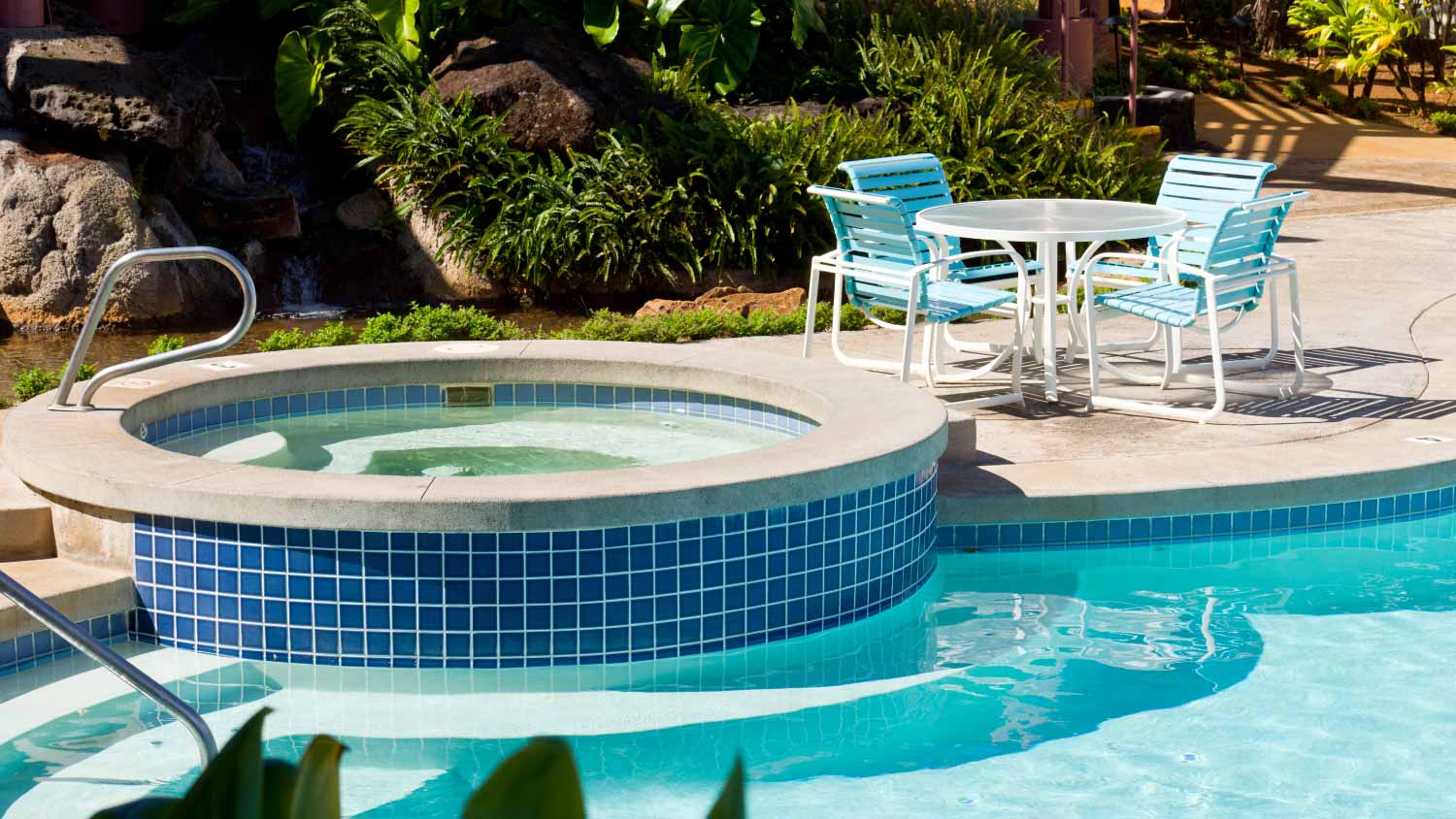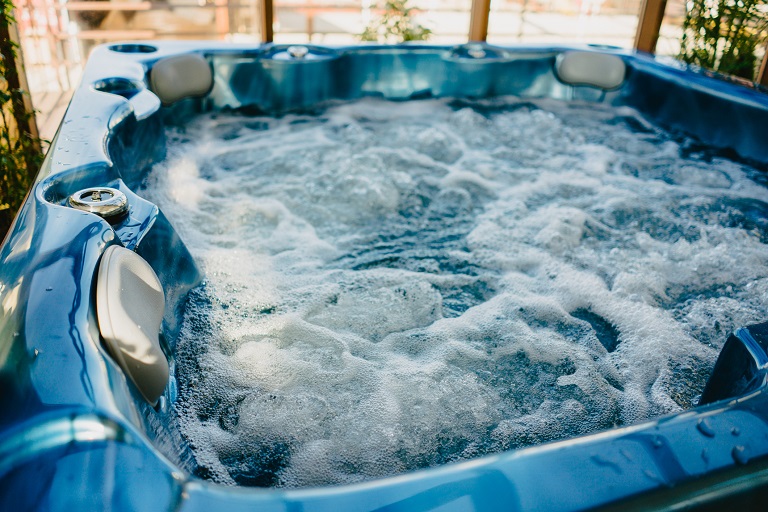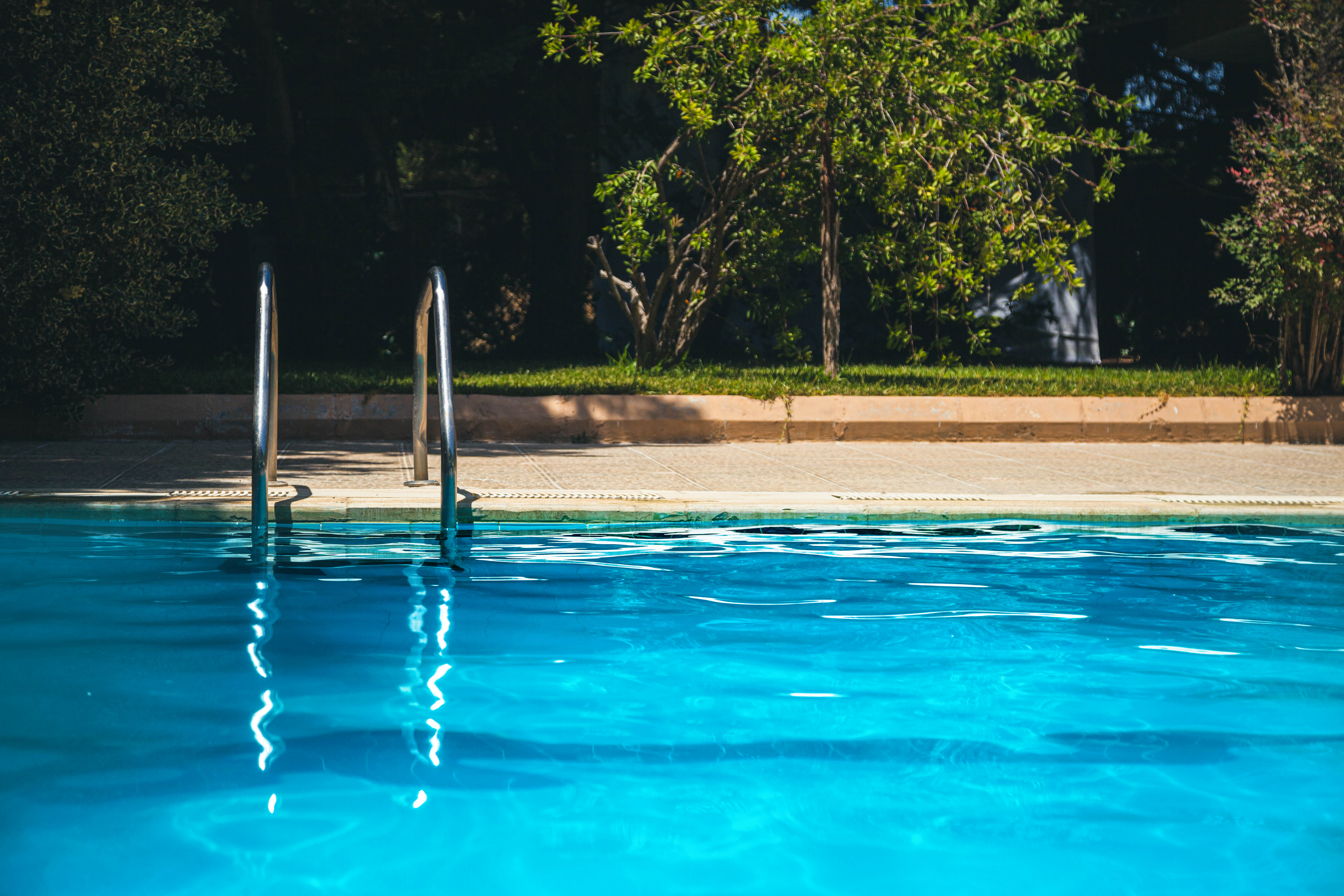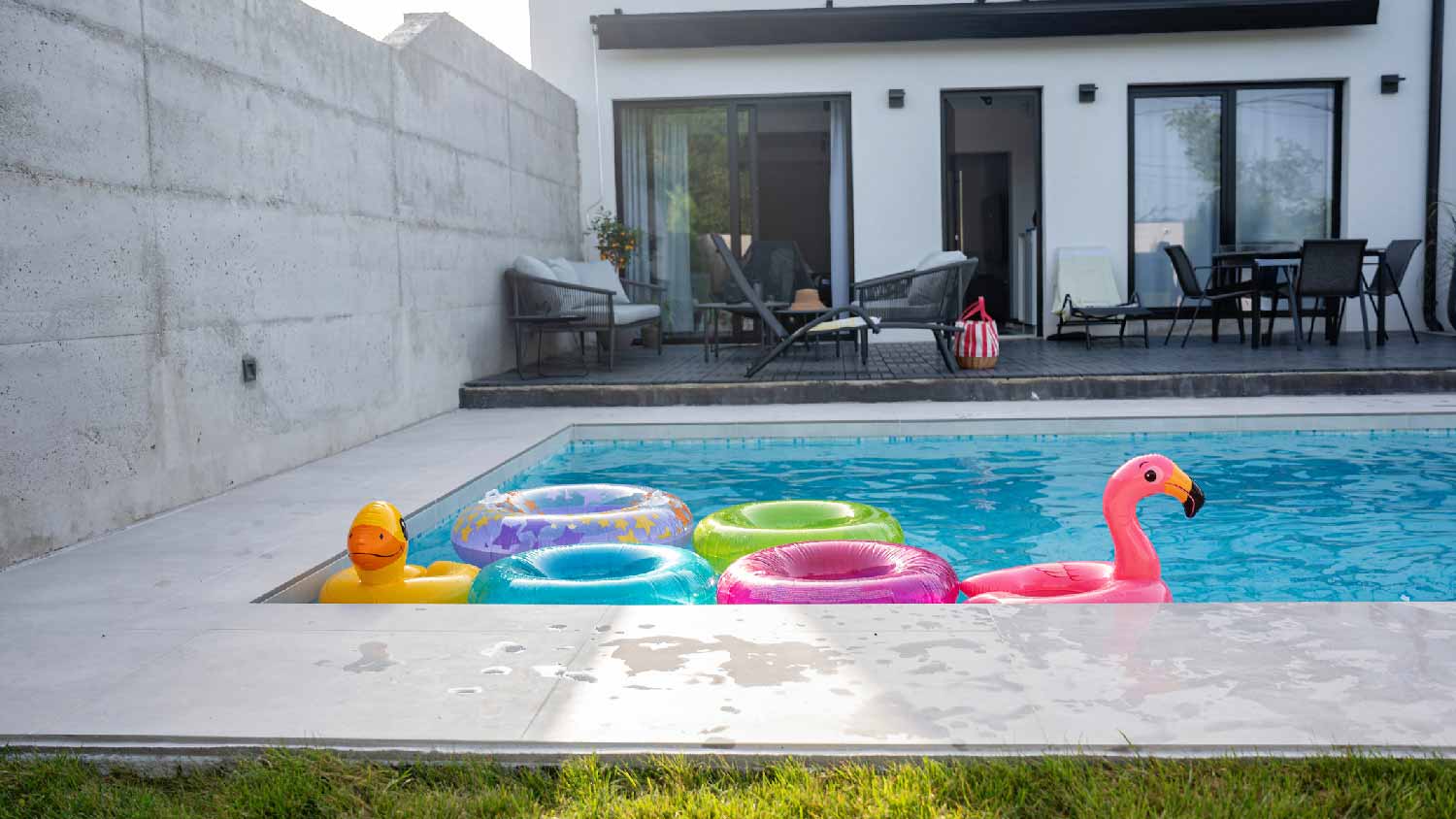
We could all use some relaxation, but we don’t always have the budget. This guide will show you how much an in-ground hot tub costs—no matter the build.
Adding a hot tub to your backyard can transform your pool parties


Installing a hot tub averages $6,000 but can go up to $35,000.
There are several types of hot tubs, all at different price points.
The type and size of the hot tub will impact the price.
It’s best to hire a professional pool installation company rather than DIY.
A swimming pool in your backyard means fun days throughout the summer. Adding a hot tub can feel like going to a spa in your home. You may wonder if you can add a hot tub to an existing pool. Before diving into the idea of installing a hot tub, here’s what you need to know to make an informed decision that could provide lasting years of enjoyment for your friends and family.
Adding a hot tub to an existing pool is possible if the space allows for it, but there are still other things you’ll want to consider before taking the plunge. Here are a few questions to ask yourself before enlisting the help of a professional hot tub installer.
Different types of pools range from in-ground infinity and lap pools to aboveground options. Each pool will have different challenges if you want to add a hot tub. With enough space around your existing pool—and no other limitations like setback rules and easements—you can design and install an in-ground hot tub.
One of the first things to consider when adding a hot tub to a swimming pool is how big you want the hot tub to be. Ask yourself how many gallons of water are in my pool and whether you’d be willing to sacrifice a part of it for a hot tub.
A professional pool designer and installer can walk you through options for different types of hot tubs since each one can affect the pool and hot tub installation, the type of plumbing needed, and the cost. Below are different types of hot tubs to choose from:
| Type of Hot Tub | Pros | Cons |
|---|---|---|
| Portable | Durable and energy-efficient, and works outdoors with a deck | Life span of 5–7 years, whereas a standard hot tub can last 20 years or more with proper maintenance |
| In-ground | Designed to suit one’s needs and interests, adds to home value, and can feature extras like stone liners and pool lights | May be more expensive to install and maintain than their aboveground counterparts |
| Attached | Looks great with an existing pool, and homeowners can enjoy their hot tubs when the weather cools down | Requires winterization at the same time as the pool since they run on the same filtration and heating system |
| Standalone | Freestanding, so you don’t have to worry about excavating | Usable after winterizing the pool since it runs on on a separate filtration and heating system |
Jacuzzi® is a hot tub brand name, but not all hot tubs are Jacuzzis. The main difference between a hot tub and a jacuzzi is that hot tubs can be manufactured and sold by different companies, come in different sizes and shapes, and are sometimes less costly than Jacuzzis. A Jacuzzi might be a good choice for those who prefer to buy a well-known brand.
Heating a hot tub separately from the pool or to a different temperature requires shutting off some plumbing parts to allow the hot tub to heat the water. A separate hot tub will require a dual-speed pump. The pump will circulate and heat the tub at a low speed, while a higher speed will power the jets.
Choosing the right chemicals to keep your hot tub water clean and safe. The chemical concentrations for hot tubs are different than those for swimming pools because of the difference in temperatures and volume of water.
While chemicals for a pool and hot tub might include similar ingredients, there are differences in the composition and concentration of active ingredients. You don’t want to add swimming pool chemicals to your hot tub because they can cause damage and irritate those using it. Only use chemicals designed for a hot tub, not a swimming pool.
Also, keeping your hot tub water separate from your swimming pool water can alleviate other issues. For example, if you need to lower the pH level in your swimming pool, you won’t have to worry about that for your hot tub if they don’t share the same water.

On average, a hot tub costs $2,000 to $11,000, and an in-ground hot tub costs $5,000 to $25,000. Costs depend on size, features, installation, and whether you choose an in-ground or aboveground option.
Consulting pool installation pros—often the same person one would hire to level ground for a pool if you don’t already have a swimming pool—is a great way to get a ballpark estimate for costs. Experienced professionals can guide you through installation, required distances from the house, and other property features that may affect the final cost.
Smaller, space-saving hot tubs that fit up to three people can cost $3,000 on the low end, while a 10-person model could cost more than $20,000. You’ll also want to consider obstacles like large trees or an existing deck, in which case you’ll need a smaller hot tub. If you’re looking for an energy-efficient design, you may also want to look at smaller sizes.
Your local hot tub installer can help you choose the right size for your setup and install your hot tub so you can start enjoying those bubbles.
It’s less expensive to install a prefabricated model than to build a hot tub custom-made since the prefab models often include plumbing and delivery. Homeowners choosing a prefab option can expect to spend between $2,000 to $3,000 less since custom hot tubs require more installation time.
Installing a hot tub is not the only cost factor that may come up during this project. Other costs may include landscaping, ensuring adequate water supply and drainage, purchasing chemicals, and ongoing costs of running a hot tub. And if you have an issue with the electric, you’ll need to hire a pool electrician.
You’ll want to hire a hot tub company to add a hot tub to your existing pool. Installing a hot tub requires several skills, from electrical systems to design and plumbing. This project can also get dangerous (mixing water and electricity is risky), so leave this one to the professionals rather than attempting to DIY it.
There are many reasons to consider adding a hot tub to an existing swimming pool. Installing a hot tub is a wonderful way to add to the overall ambiance of one's backyard.
Many enjoy how a hot tub creates a calming space to unwind in after a long day. And it adds another element of relaxation when throwing pool parties for friends and family. Some appreciate getting into a warm body of water after swimming in a pool.
Remember that hot tubs require some maintenance for overall safety, and one should limit their session to 15 minutes and stay hydrated.
From average costs to expert advice, get all the answers you need to get your job done.

We could all use some relaxation, but we don’t always have the budget. This guide will show you how much an in-ground hot tub costs—no matter the build.

Wondering how much it costs to run a hot tub? Discover average monthly and yearly costs, key factors, and tips to keep your hot tub expenses in check.

Hot tub repair costs will depend on the type and severity of the issue. Our cost guide will help you decide whether to DIY or hire a professional.

Discover how much a pool vacuum costs, including average prices, installation, and maintenance factors to help you budget for a cleaner pool.

If your pool feels gritty, you may be wondering "why is my pool filter blowing out sand?" Here are a few reasons why and what to do about it.

Why is there sand in my pool? Often, it’s due to a broken sand filter, but there are other common causes as well. Here’s how to identify and fix the problem.